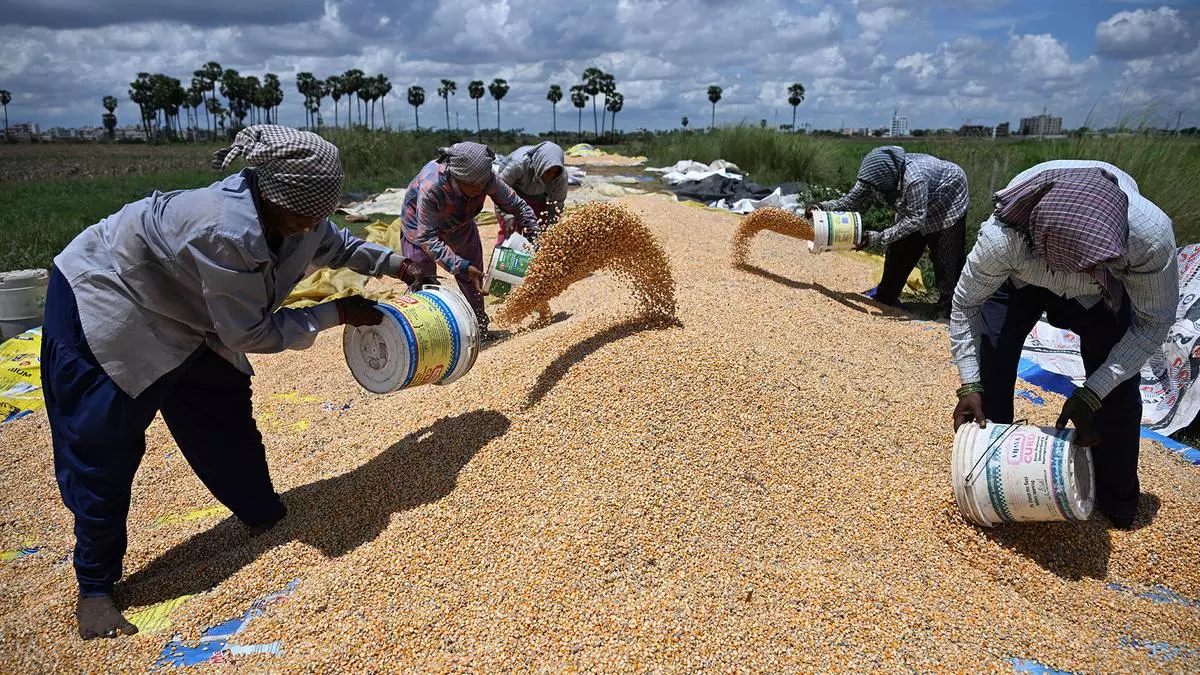India targets to produce over 340 mt of foodgrains in 2024-25
The Indian government has set the foodgrains production target at 340.40 million tonnes (mt) during the 2024-25 crop year (July-June), which includes 159.97 mt from the kharif season, 164 mt from rabi season and 16.43 mt from zaid (summer) season.
According to the target fixed by the Agriculture Ministry after consulting the States, the total production of rice has been set at 136.30 mt, wheat at 115 mt, pulses at 29.90 mt, oilseeds at 44.75 mt and coarse cereals including Shree Anna at 59.20 mt, official sources said.
The production target of maize has been fixed at 38.85 mt and that of barley at 2.25 mt. Both these crops comprise coarse cereals. On the other hand, Shree Anna production comprising jowar, bajra, ragi and other millets has been aimed at 18.10 mt, out of which a major 14.37 mt is targetted for kharif season while 2.6 mt from rabi and 1.13 mt from zaid season.
Cotton output target 35 m bales
In pulses, the target for tur crop has been fixed at 4.50 mt, that of urad at 3.05 mt, moong at 4.25 mt, chana at 13.65 mt and masur at 1.65 mt. The government plans 9.5 mt of pulses from kharif and 18.15 mt from rabi.
There is a target to produce 28.37 mt of oilseeds during kharif and 15.03 mt from rabi season and another 1.35 mt from zaid. Among oilseeds, the government aims mustard (a rabi crop) output should be 13.8 mt, groundnut to be 10.65 mt, soyabean should be 15.8 mt.
Cotton production target has been set at 35 million bales of 170 kg each while jute and mesta output is fixed at 10.50 million bales of 180 kg each. The government aims sugarcane production should be 470 mt.
Key to hit target
businessline was the first to report on May 18 that the government will likely fix 340 mt production target for all foodgrains.
Overall rainfall as well as its geographical and periodical distribution during the monsoon season, which has 75 per cent share in the country’s annual rainfall of 116 cm, are key to achieve the production target of different crops since 45 per cent of the agricultural land is rainfed.
The actual production of rice in 2023-24 was 123.82 mt, which excludes the zaid season’s output since it is yet to be announced. The government from 2022-23 started sharing production of zaid crops separately, and as much as 10.24 mt of rice was produced that year in summer season.
Production of wheat, which is a rabi crop, is estimated at a record 112.02 mt for this crop year while maize output is estimated at 32.47 mt (excluding the summer crop). In 2022-23, the output of summer season-grown maize was 2.72 mt.
Monsoon prediction
The India Meteorological Department (IMD) has announced that monsoon will hit Kerala coast on May 31, which is a day earlier than its normal schedule day of June 1 in the mainland. As predicted by IMD, south-west monsoon advanced into South Andaman Sea, some parts of Southeast Bay of Bengal and Nicobar Islands on May 19.
IMD has also predicted this year’s rainfall to be above-normal, quantitatively 106 per cent of its long period average of 87 cm with a model error of (+/-) 5 per cent during the June-September monsoon season. According to IMD, rainfall between 105 and 110 per cent of LPA is considered “above normal” and between 96-104 is categorised as “normal”. Monsoon was above normal in 2019, 2020 and 2022.
Last year, despite pan India monsoon being close to normal at 94 per cent of its long period average (LPA), several States like Karnataka, Kerala and Maharashtra faced drought-like conditions. Monsoon rainfall between 96 per cent and 104 per cent of LPA is considered normal by IMD.
